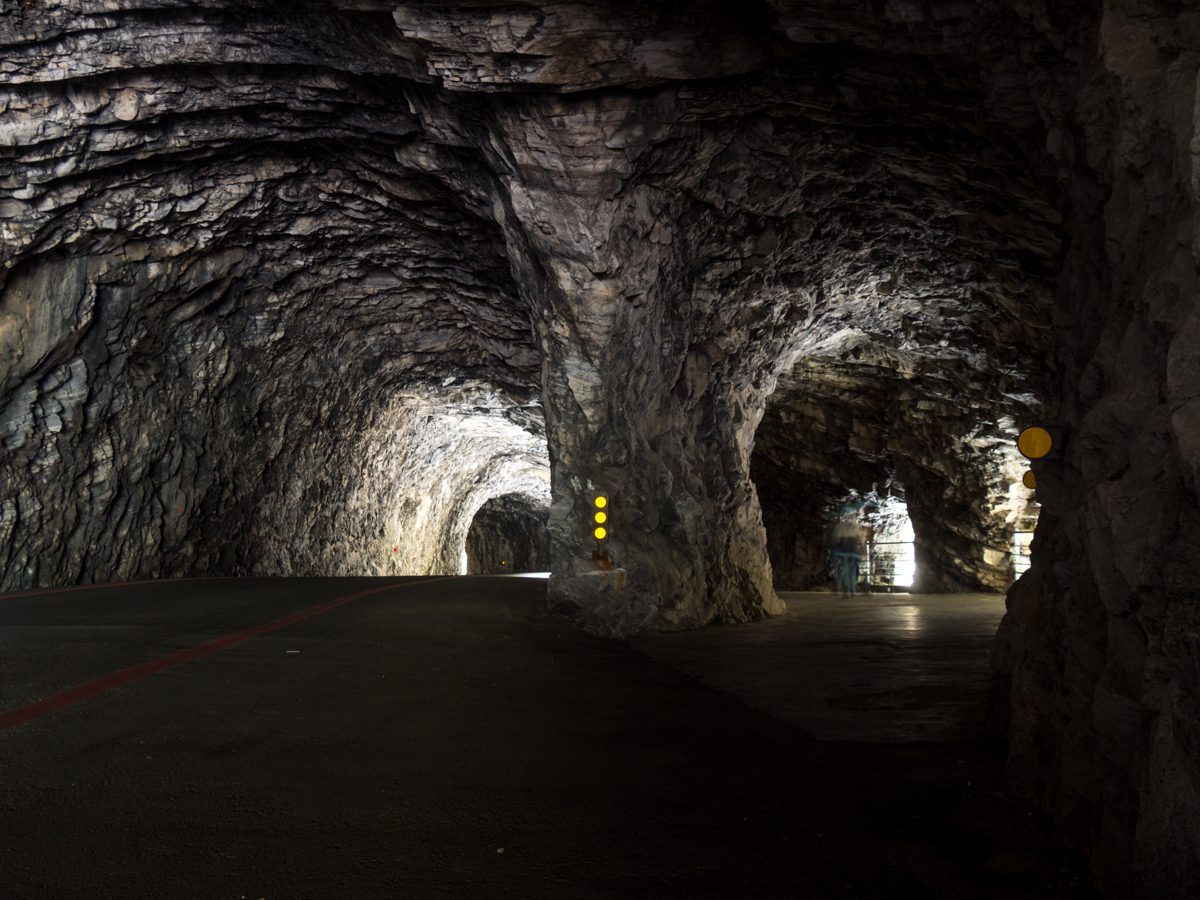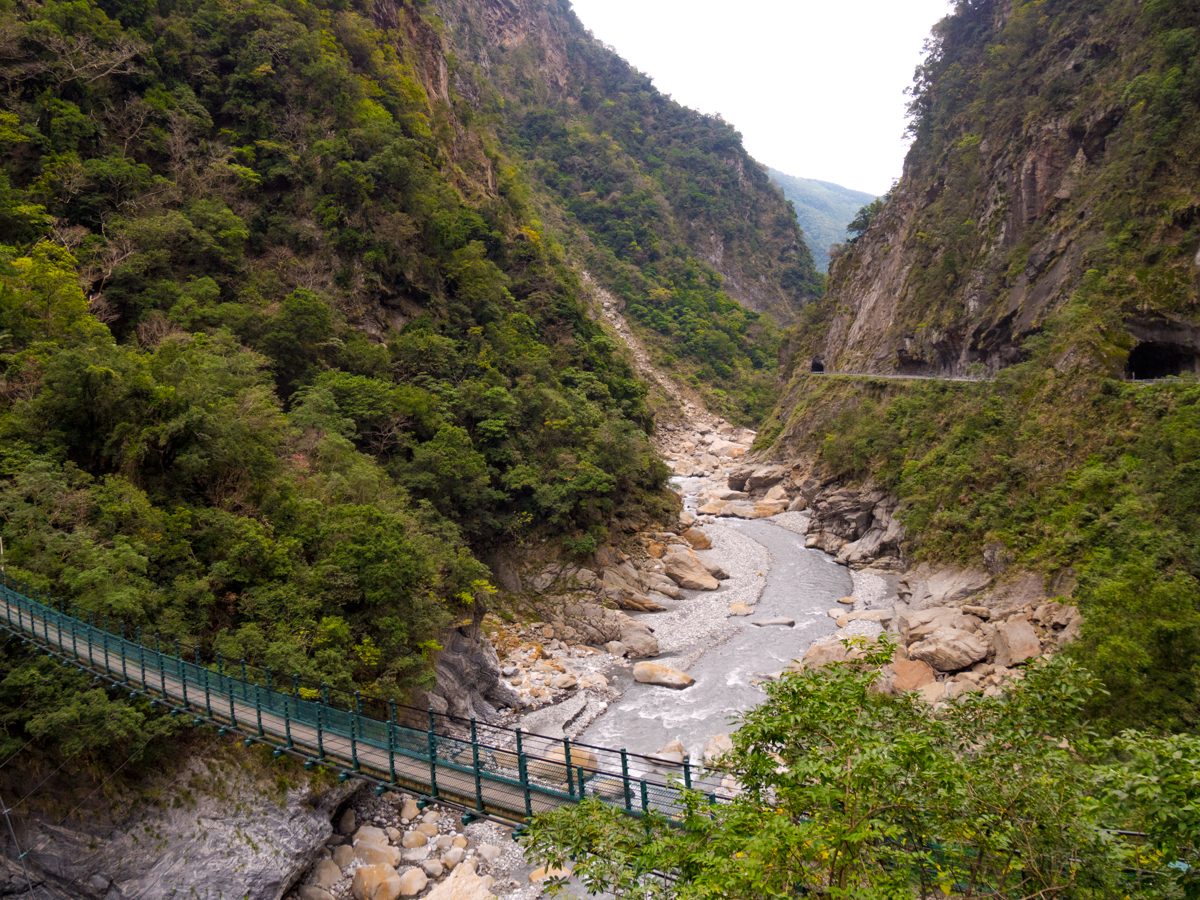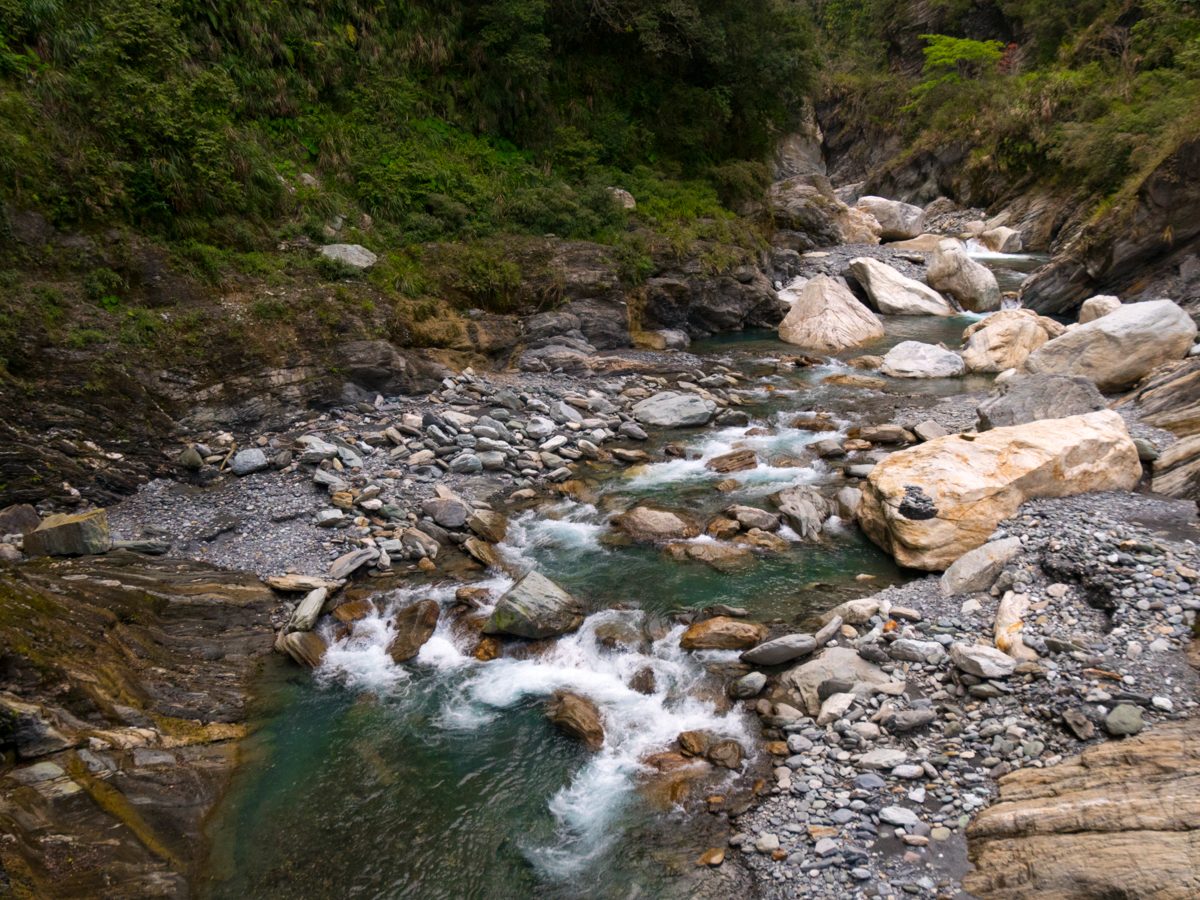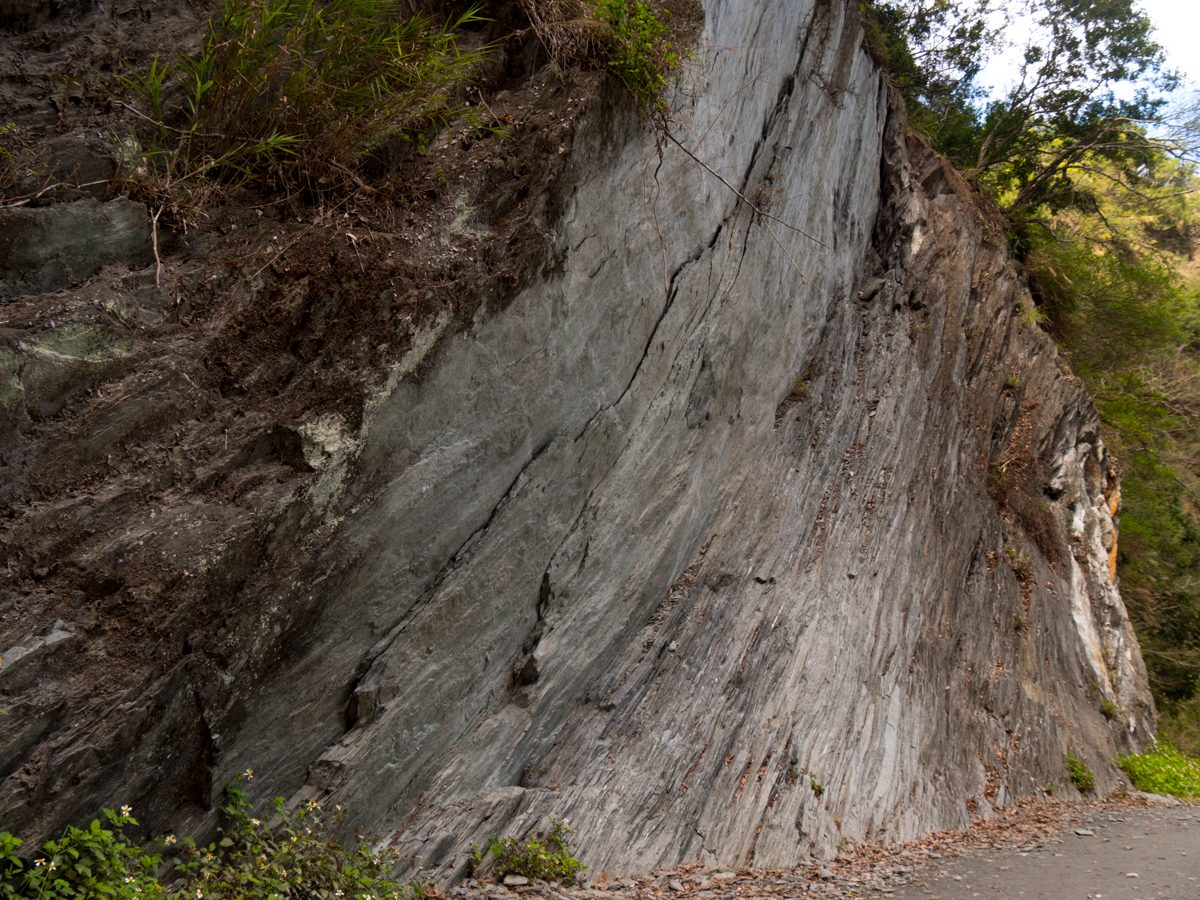Blankets of lush greenery on jagged silver marble. Compassing mountain arms sloping to heights beyond my reckoning gleaming in the golden shafts of the sun. Hard boulders that barely stay the gush of Liwu River, whose soothing song was ever mingled with the grating vroom of speeding cars.
The shaping of this most beautiful landscape spanned two hundred million years, beginning with the accumulation and hardening of sediments into limestone. The past one hundred million years saw the transmutation of limestone into marble, caused by the underlying tectonic compression between the Philippine Sea Plate and Eurasian Plate. The destructive Liwu River cut into the marble, flowing hither and thither, forming numerous valleys and ravines: a fluidity against rigidity.
























